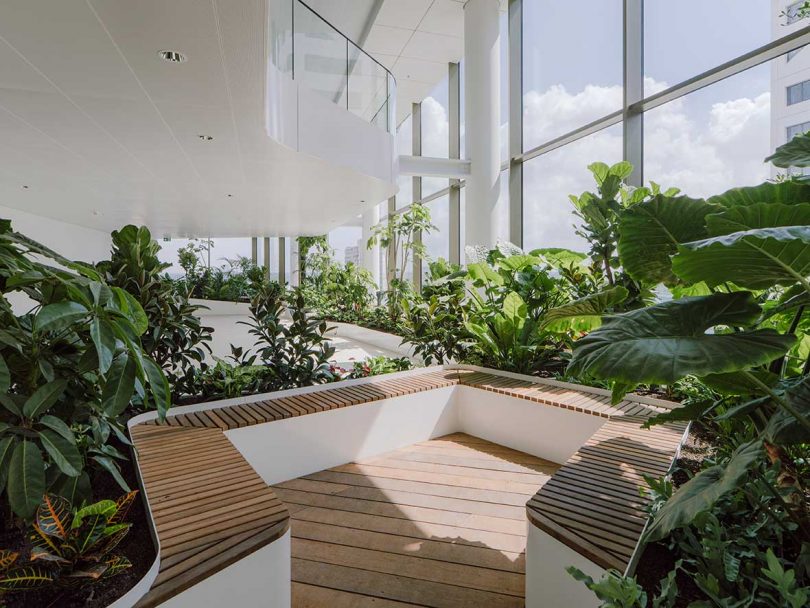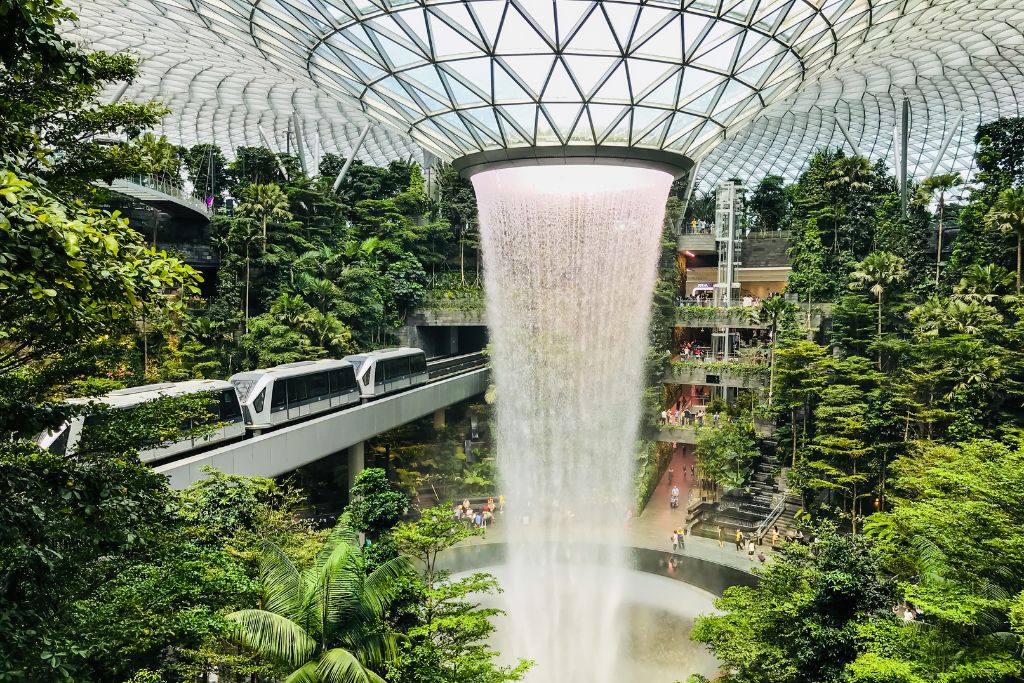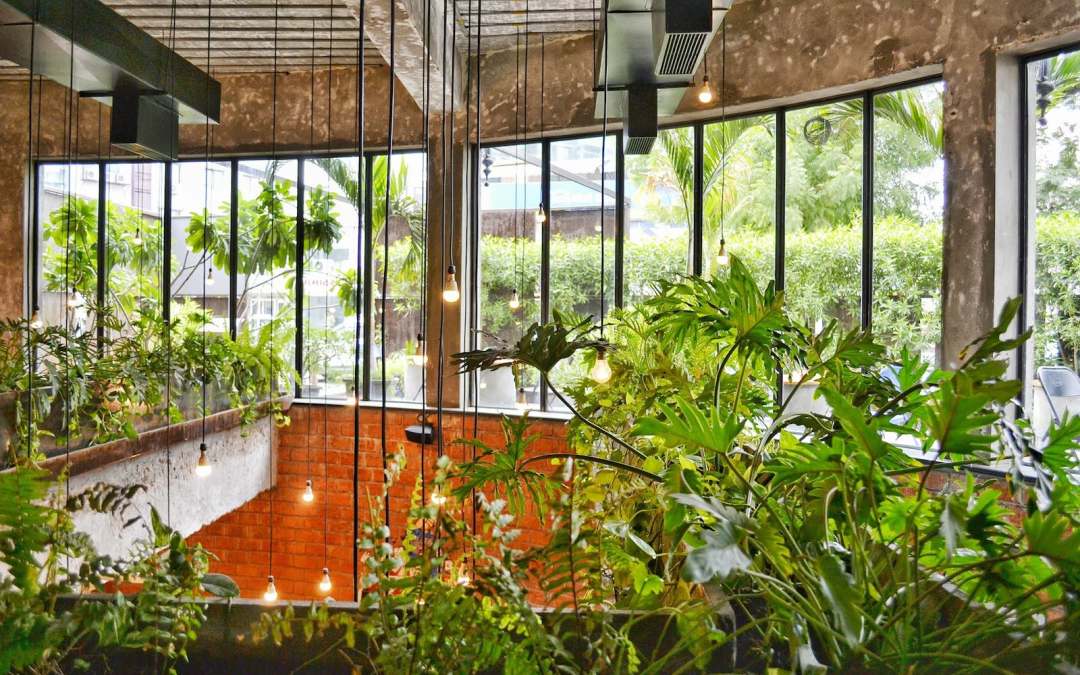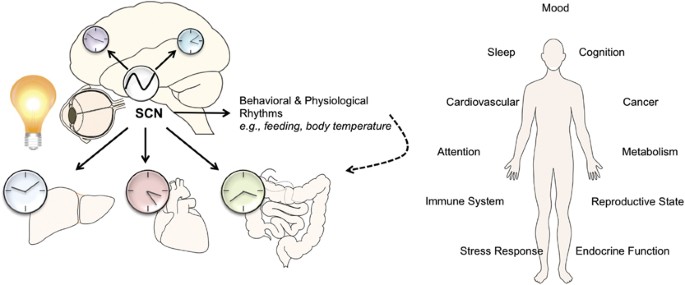Reducing Stress with Indoor Green Spaces.
Indoor green spaces and nature engagement are gaining significant popularity as individuals increasingly acknowledge their potential to enhance well-being and reduce stress through exposure to natural elements.
These calming environments, characterized by the presence of plants, nature’s influence, and natural elements, offer a refreshing respite from the demands of daily life.
Research the numerous psychological benefits of indoor greenery, including its positive effects on mental health, mood enhancement, and its contribution to improved air quality.
Discover how to create your own indoor sanctuary with restorative environments, identify the most suitable plants for improving emotional health, and implement straightforward strategies for maintaining a flourishing green space that seamlessly integrates into your daily routine, promoting life balance.
Embrace the tranquility that nature can provide, even within your home or workplace.
What Are Indoor Green Spaces?
.jpg_00.jpeg)
Indoor green spaces are defined as areas within buildings that incorporate living plants and natural elements to create a healthier and more visually appealing environment.
These spaces can vary from small houseplants to comprehensive biophilic design features such as green walls and indoor gardens. By integrating botanical elements into indoor architecture, a connection between humans and nature is fostered, which enhances emotional wellness, promotes relaxation, and contributes to improved air quality.
Indoor green spaces not only enhance the visual aesthetics of our surroundings but also provide a sanctuary for stress relief, demonstrate a commitment to ecological benefits, and render them essential components of contemporary urban landscaping.
How Do Indoor Green Spaces Reduce Stress?
Indoor green spaces are instrumental in reducing stress levels by facilitating a connection to nature that promotes relaxation and emotional well-being.
Research has demonstrated that exposure to plants and greenery can lead to a reduction in cortisol levels, a hormone linked to stress, while also improving mood and fostering a sense of tranquility.
The sensory experience of interacting with indoor plants not only contributes to a calming atmosphere but also encourages mindfulness practices, such as mindfulness meditation, that further enhance stress relief and stress reduction techniques.
By designing environments abundant in lush greenery, we cultivate restorative spaces that support psychological well-being and promote a healthier lifestyle.
What Are the Benefits of Indoor Green Spaces?
The advantages of indoor green spaces are multifaceted, encompassing psychological, physical, and emotional dimensions that significantly enhance overall well-being. Research indicates that these environments not only improve air quality and promote biodiversity but also provide substantial psychological benefits, such as reduced anxiety and improved mood.
These spaces function as sanctuaries, allowing individuals to disconnect from the demands of daily life and fostering a tranquil atmosphere that encourages relaxation and introspection. Additionally, the presence of greenery has been linked to enhanced cognitive function, which ultimately leads to increased productivity levels.
Interacting with plants and engaging in eco-therapy activities have been demonstrated to lower stress hormones, thereby contributing to greater emotional resilience and coping mechanisms. Furthermore, integrating nature therapy into indoor environments not only rejuvenates the spirit but also cultivates a sense of community and social interaction, offering essential support for holistic well-being.
The incorporation of greenery into indoor spaces undoubtedly transforms these environments into havens of health, positively impacting the quality of life.
How Do Indoor Green Spaces Impact Mental Health?
Indoor green spaces play a significant role in enhancing mental health by providing restorative environments that promote emotional well-being, psychological restoration, and effective stress management. Engagement with nature, even in indoor settings, has been demonstrated to improve psychological restoration and foster mental resilience, underscoring its importance as a component of holistic health strategies.
Exposure to greenery instills a sense of calm and security, thereby contributing to an overall enhancement of well-being. Indoor green spaces create opportunities for interaction with nature, which can help alleviate symptoms of anxiety and depression, highlighting the necessity of integrating green elements into our daily environments.
Research has shown that spending time in these lush environments can result in reduced cortisol levels, a biomarker often linked to stress reduction. Individuals tend to experience increased focus and productivity in creative spaces when surrounded by plants, as greenery has been found to stimulate creativity and enhance cognitive functioning.
This intrinsic connection to nature not only enriches emotional regulation but also fosters a sense of community through shared experiences, enabling individuals to thrive collectively. By prioritizing the establishment of indoor green spaces, individuals can cultivate a sanctuary that supports their mental health, ultimately contributing to a more balanced and fulfilling life.
What Types of Indoor Green Spaces are Most Effective?
The most effective types of indoor green spaces incorporate a range of elements, from basic indoor gardening setups to sophisticated therapeutic landscapes. Green walls, indoor ecosystems, and sensory gardens are specifically designed to enhance the therapeutic benefits of indoor environments, creating spaces that facilitate relaxation and rejuvenation.
The integration of plant care into these designs is essential for ensuring longevity and vitality, thereby maximizing their positive impact on overall well-being. These green spaces offer a variety of psychological benefits, contributing to emotional support and fostering a sense of tranquility within urban settings.
For example, green walls, often adorned with a diverse array of plants, not only serve to purify the air through indoor air purification but also function as striking visual elements that enhance aesthetic pleasure and appeal. Similarly, indoor ecosystems, which feature self-sustaining plants and aquatic setups, engage individuals in mindfulness and a sense of responsibility through their maintenance.
Sensory gardens, crafted with varying textures, colors, and fragrances, stimulate the senses, promoting mental clarity, physical comfort, and alleviating stress.
By nurturing an environment where individuals can reconnect with nature, these spaces play a pivotal role in cultivating a healthier, happier lifestyle while underscoring the importance of mindful plant care.
How Can You Create an Indoor Green Space?
Establishing an indoor green space requires careful environmental design that seamlessly integrates elements of nature into residential or commercial settings, thereby fostering a serene and revitalizing atmosphere.
The initial step involves assessing the available light exposure and spatial design conditions to identify the most appropriate plant species for the indoor gardening initiative.
The introduction of diverse plant species can enhance biodiversity, while the strategic placement and maintenance of these plants can optimize their health and growth.
Furthermore, the incorporation of sustainable design and living practices is crucial, as the selection of eco-friendly materials and native plants contributes to minimizing the overall environmental footprint and enhances biodiversity.
What Are the Best Plants for Indoor Green Spaces?
.jpg_01.jpeg)
The most suitable plants for indoor green spaces are those that thrive in low-light conditions, enhance indoor air quality, and contribute to the visual appeal and aesthetic pleasure of the environment. Popular selections include snake plants, peace lilies, and spider plants, all of which are recognized for their air-purifying properties and ability to improve indoor ecology.
When selecting plants, it is essential to consider both their aesthetic qualities and compatibility with one’s lifestyle to ensure effective care and maintenance. By making informed choices regarding indoor plants, one can cultivate a vibrant space that promotes emotional wellness and tranquility.
Along with the previously mentioned favorites, indoor gardeners may also consider options such as pothos, which is particularly resilient and can flourish in a variety of lighting conditions. The leaves of pothos not only provide a lush aesthetic to any room, but the plant also effectively filters harmful toxins from the air.
ZZ plants, noted for their striking glossy foliage, require minimal care while significantly contributing to indoor air quality. These low-maintenance varieties enhance the indoor ecosystem by alleviating stress and promoting overall well-being. Being attentive to these factors will result in an environment that supports both aesthetic enjoyment and improved health.
How Can You Incorporate Natural Elements into Your Indoor Green Space?
Incorporating natural elements into an indoor green space can significantly enhance its therapeutic landscapes and qualities, enriching the sensory experience and promoting relaxation techniques. Utilizing natural materials such as wood and stone not only complements the aesthetics of the plants but also supports color psychology, facilitating the creation of a calming ambiance.
The addition of features like water elements, natural light, and ambient nature sounds can further engage the senses, promote relaxation techniques, and psychological benefits. These deliberate integrations not only benefit the well-being of indoor plants but also contribute to a restorative environment that fosters emotional support and peace of mind.
To further enhance this indoor sanctuary, one should consider the introduction of varying textures through soft fabrics and natural fibers that encourage tactile interaction. An earthy color palette, ranging from muted greens to soft browns, can foster an atmosphere reminiscent of the outdoors, enriching the overall experience.
Additionally, incorporating fragrant plants or essential oils can elevate the olfactory experience, promoting mindful breathing and relaxation, enhancing mental health through nature’s influence. The combination of essential oils with the gentle sound of a water feature and nature sounds can create a tranquil retreat.
By thoughtfully curating these natural features, the overall space can transform into a sanctuary that nurtures both the mind and body, promoting environmental psychology and psychological restoration.
What Are the Other Health Benefits of Indoor Green Spaces?
Indoor green spaces offer numerous health benefits that extend beyond their visual attractiveness, significantly enhancing air quality, physical health, and emotional well-being through biophilia and therapeutic interventions.
Research indicates that the presence of plants can lead to improved respiratory health, heightened productivity, and reduced stress levels. By incorporating wellness spaces that feature indoor greenery, individuals can effectively engage in stress management practices that promote overall well-being.
These health benefits not only create a more enjoyable living environment but also establish a basis for sustainable living practices, urban greenery, and community gardens that contribute to ecological health and community wellness.
How Do Indoor Green Spaces Improve Air Quality?
Indoor green spaces significantly enhance air quality by employing various indoor plants that filter harmful pollutants and release oxygen, thereby promoting ecological health. Certain plant species, such as peace lilies and Boston ferns, have demonstrated effectiveness in absorbing toxins, thus contributing to a healthier indoor environment.
This enhancement in air quality not only supports physical well-being but also plays a vital role in stress reduction and emotional wellness. Therefore, the incorporation of green spaces within residential and workplace settings is essential for fostering overall health benefits.
The efficacy of these indoor plants goes beyond aesthetic appeal; they actively participate in the biological processes that purify the air we breathe. For example, foliage from plants such as spider plants and snake plants can absorb volatile organic compounds (VOCs) like formaldehyde and benzene, which are commonly emitted from household items.
Consequently, the presence of these green spaces can lead to a reduction in respiratory issues, an improvement in concentration, and an enhancement in cognitive functioning.
Integrating indoor green spaces not only benefits individual health but also nurtures a sense of community and awareness regarding ecological health. This approach ultimately encourages sustainable living practices among occupants.
Can Indoor Green Spaces Help with Physical Health?
Indoor green spaces can significantly enhance physical health by promoting active relaxation and reducing stress through nature therapy. Interaction with plants has been associated with lower blood pressure and improved immune function, making them vital components of wellness programs that focus on holistic health.
By incorporating greenery into daily environments, individuals are encouraged to adopt a more active lifestyle, as tending to plants can involve both physical activity and mindfulness practices. Therefore, indoor green spaces not only improve aesthetic appeal but also play a crucial role in enhancing physical health.
These vibrant environments provide a tranquil retreat from the demands of daily life, offering a calming effect that facilitates stress management. When individuals are surrounded by greenery, they often experience improved mood and increased energy levels, which can inspire greater participation in physical activities.
Furthermore, nature therapy in these settings has been shown to enhance cognitive function, leading to improved focus and concentration. Consequently, investing in indoor green spaces can promote a healthier lifestyle, benefiting both mental and physical well-being in a cohesive manner.
How Can You Incorporate Indoor Green Spaces into Your Daily Routine?
Incorporating indoor green spaces into one’s daily routine can significantly enhance engagement with nature, promote emotional well-being, and encourage nature engagement and mindfulness meditation, leading to a healthier lifestyle.
Simple lifestyle modifications, such as allocating time for indoor gardening, regularly interacting with plants, and practicing eco-therapy, can cultivate a sense of tranquility, connection to the natural environment, and improved quality of life.
By prioritizing opportunities for interaction with nature amidst a busy schedule, individuals can establish a restorative atmosphere that contributes to mental resilience, effective stress management, and emotional resilience.
Implementing practical strategies for integrating greenery into daily life is essential for achieving personal well-being and emotional health through sustainable design and indoor ecosystems.
What Are Some Simple Ways to Add Greenery to Your Home or Workspace?
.jpg_10.jpeg)
Incorporating greenery into residential or workplace environments can be achieved through straightforward yet effective strategies that enhance aesthetic appeal and promote well-being. It is advisable to begin by selecting low-maintenance indoor plants, such as pothos or ZZ plants, which not only require minimal care but also offer air purification benefits and visual enrichment.
Utilizing empty wall spaces for vertical gardens or green walls can maximize plant presence in smaller areas, thereby enhancing the overall environment. By incorporating plants into various rooms, one can significantly beautify the space while contributing to a calming atmosphere that supports emotional wellness.
Additionally, positioning succulents on desks or windowsills can add a distinctive personality to the workspace, as these plants are available in a diverse array of shapes and colors, providing ergonomic benefits and sensory stimulation.
The use of hanging planters can create a striking visual effect while conserving floor space, allowing for innovative arrangements. Moreover, employing plant pots with complementary colors or unique textures can serve as decorative elements that elevate the overall design aesthetic.
For individuals seeking low-maintenance air purifiers, spider plants are an excellent option, as they thrive in various lighting conditions, require only occasional watering, and contribute to indoor air purification and habitat improvement.
Ultimately, the integration of greenery not only enlivens spaces but also fosters a sense of tranquility, connection to nature, and community wellness.
How Can You Make Time for Nature in Your Busy Schedule?
Allocating time for nature within a busy schedule is essential for promoting stress relief and emotional well-being and can be effectively achieved through intentional mindfulness practices. Even brief, purposeful moments spent nurturing indoor plants or observing natural surroundings can yield significant mental health benefits.
It is important to acknowledge that these small yet impactful breaks provide an opportunity for a temporary respite from the demands of daily life. For example, stepping outside during lunch to inhale fresh air or taking a walk in the park after work can serve to rejuvenate the mind.
Incorporating mindfulness exercises, such as deep breathing or meditation in the presence of natural elements, further enhances the experience and deepens the emotional connection to nature, promoting mindfulness meditation and psychological restoration.
Individuals are encouraged to schedule these restorative pauses regularly, as they ultimately promote greater resilience against stressors and contribute positively to overall emotional well-being, enhancing life balance.
What Are Some Tips for Maintaining Your Indoor Green Space?
Maintaining an indoor green space necessitates careful attention to detail and a solid understanding of effective plant care practices, horticulture therapy, and personal space management to ensure the health and longevity of the plants.
A crucial aspect of this process is recognizing the specific watering requirements of various plant species, as both overwatering and underwatering can have negative consequences for their growth, impacting indoor ecosystems and plant variety.
Furthermore, conducting regular inspections for pests and diseases is essential for sustaining the vitality of indoor gardening endeavors and ensuring the success of indoor ecosystems and biodiversity.
By familiarizing oneself with common mistakes to avoid, individuals can cultivate a thriving indoor ecosystem that contributes to overall well-being, psychological benefits, and sustainable living.
How Often Should You Water Your Plants?
The frequency with which indoor plants should be watered depends on a variety of factors, including the specific type of plant, environmental conditions, and the moisture levels present in the soil. It is essential to monitor the moisture content and adjust the watering schedule accordingly, as some plants flourish in drier conditions while others necessitate more consistent hydration.
A thorough understanding of these requirements not only enhances the health of the plants but also contributes to the overall success of the indoor green space. Recognizing the signs of overwatering or underwatering is crucial for implementing more effective plant care practices.
Environmental factors such as humidity, temperature, and light exposure significantly influence the rate at which the soil dries out. For example, a plant situated near a sunny window or in a warm room may require more frequent watering than those placed in cooler, dimly lit areas.
The choice of potting mix can also affect drainage and moisture retention. By paying close attention to these variables, individuals can successfully cultivate a thriving indoor garden. Furthermore, adjusting watering routines to align with seasonal changes can enhance the health and vitality of the plants, thereby fostering a lush and vibrant indoor atmosphere.
What Are Some Common Mistakes to Avoid When Caring for Indoor Plants?
When caring for indoor plants, it is essential to recognize and actively avoid several common mistakes that can impede their growth and overall health, ensuring sustainable living and ecological benefits.
Neglecting proper light exposure is a prevalent issue that can result in weak stems and leaf drop; therefore, ensuring that each plant receives the appropriate amount of natural light is crucial for their well-being and productivity. Additionally, failing to acknowledge the specific humidity levels that certain plants require can lead to drying out or wilting foliage, impacting the overall health and ecological balance of your indoor environment.
Inadequate fertilization—whether through over-fertilizing or neglecting to fertilize at all—also affects nutrient availability, ultimately impacting the vigor of the plants. Proper plant care and understanding of their specific nutrient needs are essential for maintaining a vibrant indoor ecosystem and achieving the psychological benefits of a flourishing indoor green space.
By understanding the ideal watering schedule, light requirements, and nutrient needs specific to each plant type, one can create a healthier environment that fosters a more productive indoor garden. This practice of indoor gardening not only improves air quality but also supports mental health and well-being by providing a sensory experience and enhancing the visual aesthetics of your space.
Frequently Asked Questions
What are some benefits of reducing stress with indoor green spaces and nature therapy?
.jpg_11.jpeg)
Indoor green spaces have been shown to improve mood, reduce anxiety, and lower blood pressure, all of which contribute to decreased stress levels. These spaces offer restorative environments that promote relaxation and mental clarity, illustrating nature’s influence on emotional resilience and overall life balance.
How do indoor green spaces help reduce stress?
Plants and natural elements found in green spaces can have a calming effect on the mind and body, reducing stress and promoting relaxation. Engaging with nature through biophilia and eco-therapy can foster emotional well-being and provide a meaningful sense of psychological restoration.
What types of indoor green spaces can I incorporate into my home or office?
You can incorporate indoor green spaces through potted plants, living walls, or even a small garden. The options are endless and can be tailored to your personal space and needs, supporting sustainable living and enhancing visual aesthetics. Integrating nature images and elements into your design can further elevate the sensory design of your environment.
Are there specific plants that are better for reducing stress?
Yes, certain plants like lavender, aloe vera, and snake plant have been found to have calming properties and can help reduce stress levels. These plants can be integral to therapeutic landscapes and urban greenery initiatives aimed at promoting health benefits and stress management.
Can indoor green spaces also improve air quality?
Yes, plants are natural air purifiers and can improve the air quality in your indoor space, resulting in a healthier and more relaxing environment. Enhancing indoor air purification through plant variety can also support cognitive functioning and workplace wellness, contributing to positive psychology and community wellness.
Do I need a lot of space to create an indoor green space?
No, even a small corner or windowsill can be transformed into a calming green space. It’s all about finding creative ways to incorporate nature into your indoor space, fostering mindfulness practices and stress reduction techniques. Embracing nature engagement can enhance your quality of life and create personal spaces that reflect your emotional health and aesthetic pleasure.

I’m Bruno, an architect with a deep passion for Biophilic Design in Urban Architecture. Throughout my career, I’ve focused on integrating natural elements into urban planning, and I created this site to share my insights and foster a deeper understanding of how biophilic principles can significantly enhance urban living. Dedicated to sustainable development, I continually explore innovative design solutions that promote both environmental and human well-being in city landscapes.














Publicar comentário